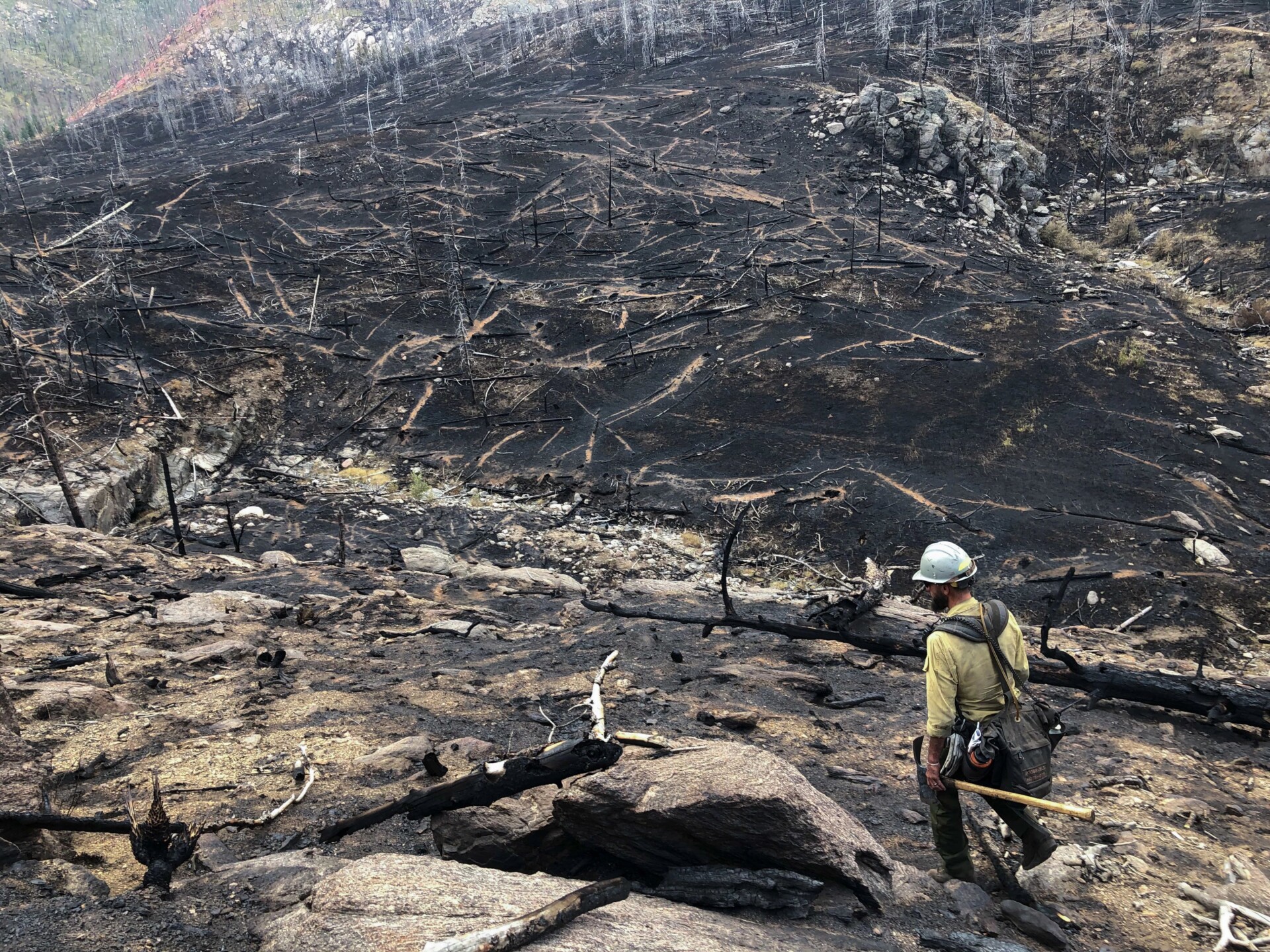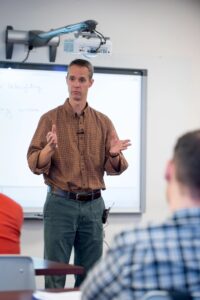
Likelihood of another fire season as bad as 2020 up to 10 times higher than it was 50 years ago
q&a by Allison Sylte
published July 31, 2023

The 2020 wildfire season may have been the worst in Colorado’s history, but if recent climate trends hold true, years like this could become more and more common.
This was one takeaway of a study led by Colorado State University Department of Statistics Professor Dan Cooley and graduate student Troy Wixson, who developed models comparing the climatological factors connected to increased wildfire activity in Northern Colorado between 1959-1978 with today.
He found that the probability of having a wildfire season as destructive as 2020’s is four to 10 times higher than it was 50 years ago.
“There’s a clear climate signal here,” Cooley said. “We can say qualitatively over and over again that fire weather has changed, fire conditions have changed, but we’re now able to put a number to that – and as we all know, numbers are a powerful thing.”
Cooley sat down with SOURCE to discuss what went into his statistical models and how they can inform future decision-making during increasingly volatile fire seasons.
SOURCE: What was the purpose of your research?
Cooley: The first thing to know is that we’re not predicting wildfires – that is super difficult. What we did instead was take one step back and instead talked about the conditions conducive to a fire.
That’s a much easier question, but an important one, because it really does focus on the climate change aspect. You’re trying to assess how much and how different the setting for wildfire activity is under the current climate as compared to the reference climate 50 years ago.
You mentioned conditions conducive to a wildfire. What variables did you consider, and where did the data come from?
The public is pretty familiar with the meteorological conditions that lead to a wildfire: of course there’s temperature, how dry the air is throughout the season and wind speed, which made the East Troublesome Fire blow up in 2020.
These meteorological variables aren’t the only drivers of fire danger. There’s also pine beetle kill, which made the 2020 wildfires in Northern Colorado behave much differently than they would have if the fire occurred in a healthy forest. This and forest management aren’t directly climate.
We only used meteorological variables, because we’re looking at the climate signal and how much it is driving fire danger year over year.
When it came to obtaining our data, we used the last 20 years of weather station and reanalysis data that included each of the meteorological variables, and compared that to reference materials from 1959-1978 with similar information.
When it was all said and done, what did this data tell you?
Once we had all this data, we computed the Fire Weather Index (FWI), which boiled this very complicated climate signal down to a single number. We were able to calculate it for each day, and if you look at the basic plot points for 1965-1985 versus 2020, they’re strikingly different – showing that the climate changed over that period.
The tricky part is coming up with a number to convey this. We didn’t want to talk about fire risk on a particular day. Because the entire 2020 fire season was so dramatic, we wanted to find a way to put a number on an entire season. This is where statistics comes in. To get our estimates we had to build a statistical model which captures the day-to-day dependence in the FWI, and gets that dependence right when the FWI is at extreme levels.
And what our data shows is that the probability of having a fire season as bad as 2020 is four to 10 times greater than it was 50 years ago.
What should the public take away from this information?
We hear time and time again that the fire system has changed, but what we’re able to do is quantify it. I think if we say that seeing a fire season like we saw in 2020 is 10 times more likely than it was 50 years ago, that can help us navigate how we prepare for fires and allocate our resources, since it’s clear that the environment has changed.
The statistical approach we use is novel, and what we’re hoping is that it spurs discussions in lots of communities about the best ways to capture and convey the changes we’re seeing in extreme behavior.
When it comes to fire danger in Northern Colorado, there’s a clear climate signal here: The climate we have observed recently is different from that observed just a few decades ago.
Summers of Smoke
For decades, Colorado State University has been at the forefront of fire science, earning its reputation as one of the leading institutions studying wildfires. Explore other stories on wildfire research at CSU.